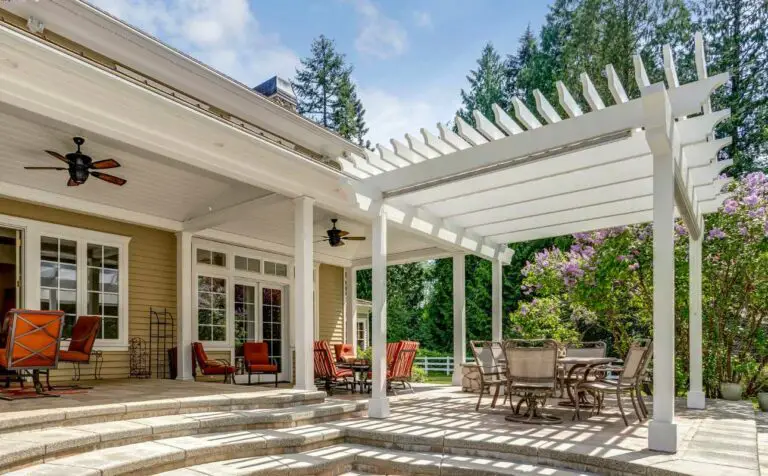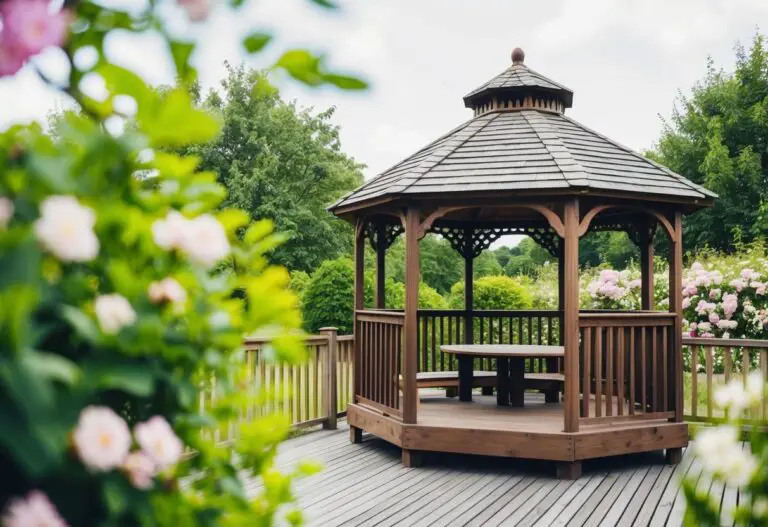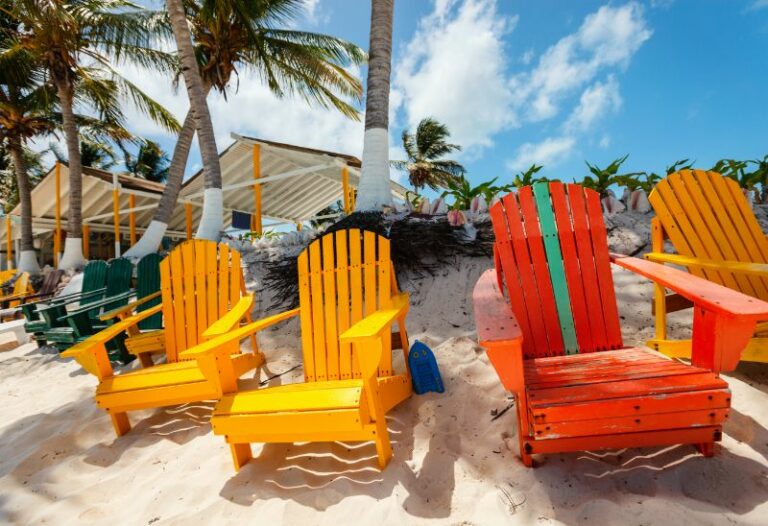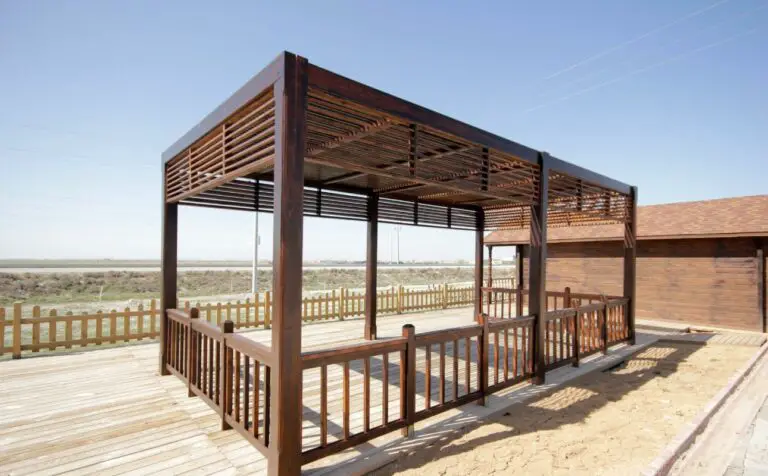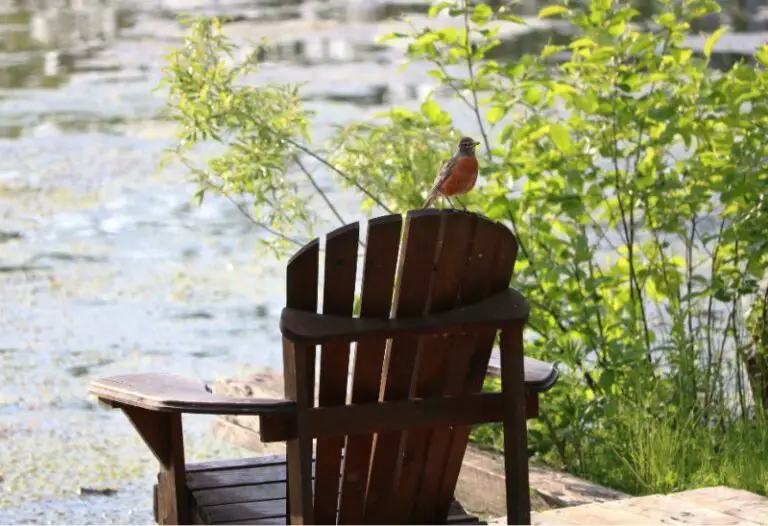For those seeking to optimize their pergolas for year-round use, waterproofing becomes a crucial consideration. During rainy seasons, it can be challenging to enjoy your pergola due to the risk of getting wet.
Fortunately, with the right techniques and materials, you can make your pergola waterproof and protect it from the rain. In this article, we will explore various methods to make a pergola waterproof and provide you with tips and guidelines on how to do it yourself.
Whether you’re looking to enhance your outdoor living space or protect your patio furniture from the elements, learning how to make your pergola waterproof is a valuable skill that will improve your quality of life.
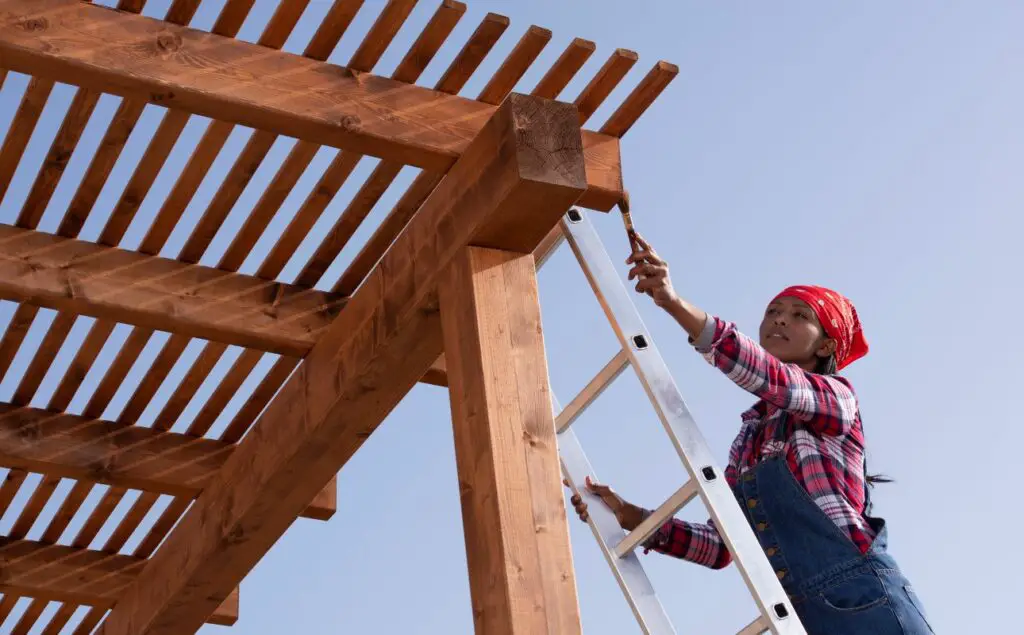
Assessing Your Pergola’s Water Resistance Needs
If you want to make your pergola waterproof, the first step is to assess its water resistance needs. This will depend on a few factors such as your location’s climate and the amount of rainfall it receives annually.
Once you have an idea of how much rainwater your pergola will be exposed to, you can start looking into waterproofing materials that suit your specific requirements.
Another important consideration when designing a waterproof pergola is ensuring proper drainage. Without adequate drainage, water may pool on top of or within the structure, causing damage over time.
Therefore, incorporating appropriate drainage channels and gutters should be part of any pergola design plan to prevent water from accumulating in unwanted areas.
By taking these factors into account during the planning phase, you can ensure that your finished pergola provides ample protection against rain while maintaining its aesthetic appeal.
Sealing The Wood To Prevent Water Damage
One of the most important things you can do is seal the wood to prevent water damage. Wood sealing techniques not only protect against moisture but also help extend its lifespan.
When choosing a sealer, be sure to select one that is specifically designed for outdoor use and provides UV protection. There are many waterproofing products available on the market such as oil-based, wax-based, or water-repellent sealers.
Each type has its own advantages and disadvantages; therefore, research carefully before selecting which best suits your needs. Once applied, regularly maintain the sealant by reapplying every few years or sooner if needed.
Applying Waterproofing Spray Or Paint
There are several different types of waterproofing sprays and paints available, each with their own set of pros and cons. One option is silicone-based sprays, which create a clear barrier that allows the natural look of the wood to show through. However, these can be difficult to apply evenly and may require multiple coats.
Another choice is acrylic-based paints, which come in a range of colors and provide more comprehensive coverage than sprays. However, they may not last as long as other options and could fade over time if exposed to direct sunlight.
Ultimately, it’s important to consider your specific needs when choosing a waterproofing product for your pergola.
Installing A Waterproof Roof Covering
When considering roofing materials for your pergola, there are several options available on the market today. While cost comparison may play a significant factor in your decision-making process, it’s essential to consider the durability and longevity of each material.
Here are five popular choices:
- Polycarbonate sheets: These lightweight sheets offer excellent protection against harsh weather conditions while still allowing natural light to shine through.
- PVC panels: Easy to install and affordable, these panels provide good insulation and come in various colors.
- Metal tiles: Durable and long-lasting, metal tiles can withstand extreme temperatures and offer a modern look.
- Wooden shingles: If you’re looking for something more traditional or rustic, wooden shingles provide excellent insulation and add character to your outdoor space.
- Fabric covers: Ideal for temporary use or as an added layer of protection over another roofing material, fabric covers come in different styles and colors.
With proper installation techniques, maintenance, and care, your new waterproof roof covering will make spending time outdoors even more enjoyable without worrying about inclement weather.
Choosing The Right Waterproof Fabric For Your Pergola
There are various waterproof fabric options available in the market, such as acrylic-coated polyester, polyvinyl chloride (PVC), and polyethylene.
Acrylic-coated polyester fabrics come in different colors and patterns, making them an excellent choice if you want to add some style to your outdoor space.
On the other hand, PVC fabrics are more durable and can withstand harsh weather conditions. Polyethylene is another affordable option that provides sufficient protection against rain and UV rays.
When choosing the right color for your pergola cover, consider one that complements the overall design of your home’s exterior or matches with your garden furniture.
Remember that not all waterproof fabrics are created equal, so it’s essential to do your research before buying one.
Look for materials that can resist mold and mildew growth and those with high water resistance levels.
Adding Side Curtains Or Shades For Extra Protection
If you want to make your pergola more waterproof, adding side curtains or shades is an excellent option. Not only do they provide extra protection from the elements, but they also add a decorative touch to your outdoor space.
You can choose from a variety of materials such as canvas, bamboo, or even outdoor fabric. In addition to providing shade and privacy, these curtains or shades can also be used to hang outdoor lighting fixtures.
Adding string lights or lanterns will create a cozy atmosphere for evening gatherings with friends and family. And if you’re feeling creative, you can even incorporate other decorative accessories into the design of the curtains/shades to match your personal style!
Incorporating Drainage Systems To Divert Water Away From The Pergola
To further enhance the waterproofing capabilities of your pergola, you can incorporate rain diversion and drainage solutions.
Rainwater that accumulates on top of your pergola can cause damage to its structure over time if not properly managed. To prevent this, you need to create a way for the water to flow away from the pergola.
One solution is to install gutters that will catch the rainwater and direct it towards downspouts or pipes. These should be positioned strategically so as not to interfere with the overall design of your pergola.
Another option is to slope the roof slightly towards one side where a drain pipe can be installed. This allows water to easily flow out without causing any damage or inconvenience.
The Bottom Line
Making a pergola waterproof is an important consideration for those who live in areas with frequent rain or snow.
There are several types of fabrics that are suitable for waterproofing a pergola, including polyester and acrylic blends.
It’s also possible to use waterproofing sprays or paints on existing structures, but it may be more effective to apply these during construction.
If you’re unsure whether your pergola needs additional waterproofing, try spraying water onto the structure to see how quickly it absorbs moisture.
FAQ
What Types Of Fabrics Are Suitable For Waterproofing A Pergola?
When it comes to waterproofing a pergola, there are various options for waterproof fabric that can be used.
These include vinyl-coated fabrics and polyester-based materials with PVC backing. Both of these choices offer excellent protection against the elements while also being cost-effective solutions.
Can A Waterproofing Spray Or Paint Be Used On An Existing Pergola?
Both options have their pros and cons, including cost comparison and effectiveness of the waterproofing.
While using a spray or paint on an existing pergola may be more cost-effective, it may not provide as strong of a barrier against water as applying it during construction would.
Ultimately, the decision should depend on individual needs and preferences.
How Can I Tell If My Pergola Needs Additional Waterproofing?
Signs of water damage are a clear indication that your pergola needs additional waterproofing.
However, if you’re unsure whether your structure is already water-resistant enough, testing its water resistance is the best way to determine this.
One method involves pouring a small amount of water on different parts of the pergola and observing how it behaves.
If the water forms droplets or rolls off the surface without soaking in, then your pergola has good water resistance
Are There Any Eco-Friendly Or Natural Options For Waterproofing A Pergola?
Instead of using traditional chemical-based sealers or stains, consider using a mixture of linseed oil and beeswax. This will create a water-resistant barrier that is both environmentally friendly and effective.
Additionally, you can use natural materials like bamboo or thatch roofing instead of synthetic options. Not only do these choices look beautiful, but they also add an organic touch to any backyard oasis while keeping things sustainable.

